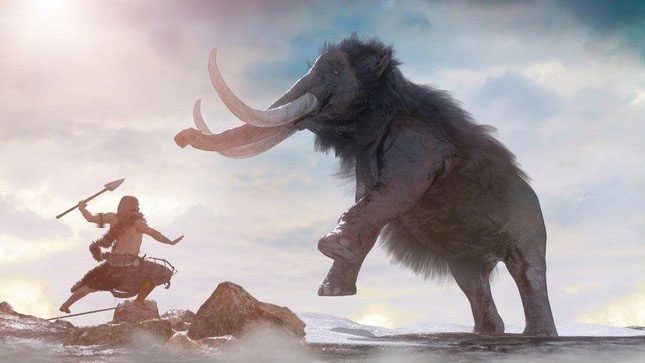A controversial study suggests that a 37,000-year-old woolly mammoth butchering site discovered in New Mexico may be the earliest evidence of residents in North America.
Some of the skeletons in this area show signs of having been processed by humans or even used as tools, providing some of the most compelling evidence that humans settled in North America much earlier than previously thought.
The newly discovered site on the Colorado Plateau in northern New Mexico was uncovered by hiker Gary Hartley. Researchers have named the site “Hartley Mammoth Locality” in his honor.

Humans and ancient woolly mammoths in North America.
An excavation at the Hartley site uncovered the incomplete remains of two woolly mammoths, believed to be an adult female and a juvenile. Most of the bones were gathered into a large pile, with the skull of an adult female on top. By dating the collagen in the bones using carbon dating, researchers estimate the remains could date back to between 36,250 and 38,900 years ago.
Researchers noted that some of the skeletons appeared to have been fashioned into makeshift knives, possibly used for butchering woolly mammoths. Other bones showed signs of breakage from trauma due to impact, possibly from stone tools, which were also found within the bone pile. There were also puncture marks on some of the mammoth ribs, likely from humans attempting to extract valuable nutrients inside.
Small particles found in the sediment surrounding the bones included crystalline ash from what researchers suspect to be fire, which may have been used for cooking woolly mammoth meat as well as other small animals.
When did the first Americans appear?
Archaeological evidence suggests that the Clovis people—an early group identifiable by their uniquely shaped weapons—were the first in North America, arriving around 13,000 years ago. However, recent findings have revealed that there may have been a genetically separate group known as pre-Clovis people living in North America before the Clovis arrived.
Justin Tackney, an anthropologist at the University of Kansas specializing in human settlement, is now certain that the pre-Clovis people were the first inhabitants of North America.
This timeframe indicates that the pre-Clovis people arrived in North America after the end of the Last Glacial Maximum (LGM)—the most recent period when ice coverage on Earth was at its greatest, approximately 26,500 to 20,000 years ago. The melting ice likely created opportunities for the pre-Clovis people to cross the Bering Land Bridge, a landmass that once connected North America and Asia.
A 2017 study investigating a similar mammoth bone pile at a site near San Diego revealed that these bones may have been processed by humans and could date back approximately 130,000 years, suggesting that humans may have lived much longer than previously believed.





















































